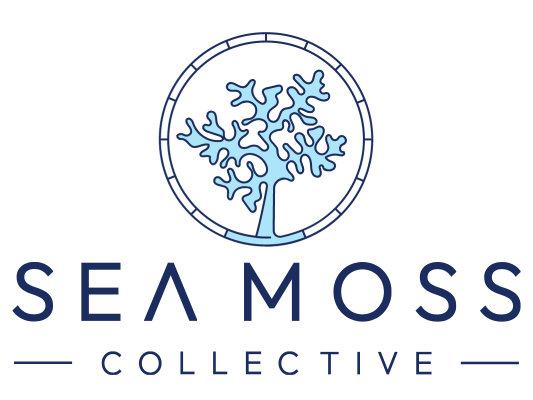Answering Some Common Consumer Questions About Sea Moss
People are talking about Sea Moss everywhere these days. Social media is full of posts about it. Health stores stock it on their shelves. But what exactly is this ocean plant? Let's answer some common questions that pop up when people first hear about sea moss.
● What Exactly is Sea Moss?
● How Do People Use Sea Moss?
● Is Sea Moss Safe to Eat?
● What Nutrients Does Sea Moss Contain?
● How Should You Store Sea Moss?
● What Should You Look for When Buying Sea Moss?
● How Much Sea Moss Should You Use?
What Exactly is Sea Moss?
Sea moss is a type of red algae that grows in the ocean. It looks like a small plant with branching stems. People have been consuming it for hundreds of years, particularly in coastal regions such as Ireland and the Caribbean. The scientific name is Chondrus crispus, but it is commonly referred to as sea moss.
This ocean plant grows on rocks along the coastline. It comes in various colors: red, purple, yellow, and green. When dried, it turns white or light brown.
How Do People Use Sea Moss?
Most people turn Sea Moss into a gel. They soak the dried sea moss in water overnight. Then they blend it with fresh water until it becomes smooth and thick. This creates a gel that looks like clear jelly.
People add this gel to smoothies, soups, and other foods. Some folks use it as a thickening agent in cooking. Others mix it into face masks for skincare routines.
Is Sea Moss Safe to Eat?
Sea moss is generally safe for most people when eaten in normal food amounts. It's been part of traditional diets for centuries. However, like with any food, some people might have allergies or sensitivities.
Individuals who take blood-thinning medication should consult their doctor first. Sea moss contains iodine, so individuals with thyroid conditions should also consult their healthcare provider. Pregnant women must consult their doctor before adding new foods to their diet.
What Nutrients Does Sea Moss Contain?
Sea moss contains various minerals that come from the ocean. It has iodine, potassium, calcium, and magnesium. These are the same minerals found in seawater.
When people discuss their reasons for using sea moss, they often mention its rich natural mineral content. However, the amounts of sea moss can vary significantly. The growing conditions, harvesting methods, and processing all affect the final nutrient content.
How Should You Store Sea Moss?
Dried sea moss can last for months when stored properly. Store it in a cool, dry place, away from direct sunlight. A sealed container is best for keeping moisture out.
Sea Moss Gel needs to be refrigerated immediately. It typically stays fresh for about two weeks when stored in the refrigerator. For extended storage, you may also freeze it in ice cube trays.
What Should You Look for When Buying Sea Moss?
Good Sea Moss NZ should look natural and clean. Avoid products that appear too perfect or unnaturally white, as this may indicate they've been processed with chemicals. Real sea moss has some variation in color and texture.
Buy from reputable suppliers who can provide information on the origin of their sea moss. Wild-harvested sea moss from clean waters is often preferred.
How Much Sea Moss Should You Use?
Start with small amounts if you're new to sea moss. A teaspoon of gel per day is a common starting point. You can gradually increase the amount if you want to. Remember that sea moss is simply a whole food and works best when included in a wholesome, varied diet.
Final Note
Sea Moss is now widely available, but it’s best enjoyed as part of a balanced diet. Select high-quality products, store them properly, and establish realistic expectations. Always consult a healthcare professional before incorporating sea moss or related products into your daily routine.
Looking for trusted sea moss products? Sea Moss Collective provides premium, responsibly sourced Sea Moss NZ and Sea Moss Gel in New Zealand. Explore our clean, natural range to get started.

